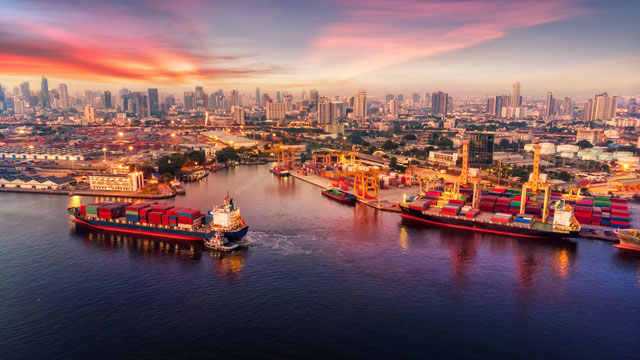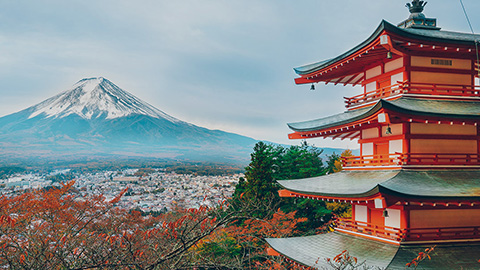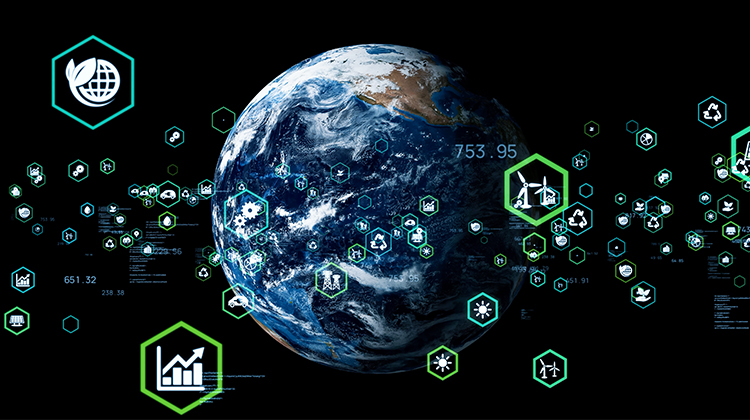May 2023
Hydrogen is Taking Off in Japan. That’s Good News for Global Investors and Innovators
December 2023

Takasago Hydrogen Park, Mitsubishi Heavy Industries, Ltd.
At the Takasago Machinery Works in Hyogo Prefecture, western Japan, factory workers assemble high-efficiency gas turbines that are the workhorses of Japan's power sector. Liquid natural gas (LNG) provides Japan with more than a third of its total energy, and the country is one of the world's biggest importers of the fossil fuel.
But now the Takasago facility has a new mission: to develop the technologies needed to harness hydrogen, an abundant element that can be burned with no carbon emissions, as a next-generation source of energy.
Mitsubishi Heavy Industries (MHI), which operates the Takasago plant, has added Takasago Hydrogen Park to its campus. The Hydrogen Park began full-scale operations in September 2023, and is the world's first integrated facility for validating technologies used in hydrogen production, storage, and power generation.
It is one of a profusion of clean-energy projects that are moving forward across Japan, as the country embarks on an industrial and social transformation intended to reduce its net greenhouse gas emissions to zero by 2050. For the next ten years, the publicand private sectors will work together to realize over 150 trillion yen in investment into Green Transformation (GX) field under the government's GX Promotion Strategy.
The projects encompass a range of alternative-energy technologies for renewable energy sources including hydrogen and ammonia. And they are changing Japan's economy as well as its energy mix, by creating jobs, spurring innovation and investment, and opening the door to global business partnerships.
"The Japanese market holds great potential for the production and utilization of green hydrogen," Jarle Dragvik, the CEO of Norway's HydrogenPro, said in September 2023 after his company delivered a 5.5-megawatt electrolyzer to the Takasago facility, for use in extracting hydrogen from water.
Japan has long emphasized the benefits of hydrogen fuel, which include expedient storage and transport as well as emissions-free combustion.
It formulated the world's first national hydrogen strategy in 2017,and has expanded the use of hydrogen fuel cells for households and transportation, including in the world's first commercially available hydrogen-powered vehicles. Japanese companies hold an unmatched number of patents for hydrogen-related technologies, and are working hand-in-hand with international firms like HydrogenPro to further innovation.
Turbines such as MHI's are just one way to turn hydrogen into useful energy. Another is hydrogen fuel cells, which produce electricity through a chemical reaction between hydrogen and oxygen, and can be used for smaller-scale power generation in homes and cars. Toyota started selling fuel cell vehicles in 2014, and Panasonic installed hydrogen fuel cells in the athletes' village for the Tokyo Olympics and Paralympics in 2021.
In June 2023, French industrial-gas supplier Air Liquide opened a refueling station for fuel cell taxis in Kobe, in collaboration with taxi operator Kobe MK. It is the 18th Air Liquide hydrogen refueling station in the country, and the first aimed specifically at cabs. Virginie Cavalli, President and Chief Executive Officer of Air Liquide Japan, noted "support from key stakeholders, including public authorities and leading companies."
An important issue for hydrogen fuel is how it is produced. Although hydrogen is the most abundant element in the universe, it is often bundled with other elements such as oxygen—a pairing that makes water, i.e. H2O. Separating the hydrogen requires energy, which means that the greenest hydrogen is produced using methods that are themselves carbon-free.
Since 2021, Germany's Siemens Energy has been collaborating with Toray Industries in Japan to promote a zero-emission separation technology known as Polymer Electrolyte Membrane (PEM) water electrolysis. Their project has been selected for support by the Green Innovation Fund, a total value of 2.8 trillion yen organized by Japan's Ministry of Economy, Trade and Industry (METI) and the New Energy and Industrial Technology Development Organization (NEDO).

Another clean pathway for hydrogen fuel production is electrolysis powered by wind, solar, or nuclear energy. In Ishikari Bay on Japan's northern main island of Hokkaido, Green Power Investment is building a 14-turbine, 112-megawatt offshore wind farm that will generate enough electricity to power 83,000 homes. The company is considering adding a hydrogen plant to the facility, which would use electricity produced by the turbines during low-demand hours to produce hydrogen, effectively storing the wind farm's surplus output for future use.
Green Power operates or is building nine wind and solar projects around Japan, with more in the pipeline. Founded in 2004, it attracted an American renewable-energy company, Pattern Energy, as a major investor, before being sold to a Japanese consortium this year.

Roland Thompson, founder and CEO of Austvent
Roland Thompson, founder and CEO of Austvent, an impact investing firm involved in Japan's clean-energy sector, says the Japan External Trade Organization (JETRO) and other government agencies provide valuable support to foreign enterprises, by helping them to navigate licensing and permitting procedures, introducing business contacts, and advising on marketing and strategy.
"There is more and more interest among companies in getting information from JETRO to make informed decisions," Thompson says. "Japan has made ambitious commitments to decarbonize its economy, and that is creating opportunities."
Learn More
Contact Us
Investing in and collaborating with Japan
We will do our very best to support your business expansion into and within Japan as well as business collaboration with Japanese companies. Please feel free to contact us via the form below for any inquiries.
Inquiry FormJETRO Worldwide
Our network covers over 50 countries worldwide. You can contact us at one of our local offices near you for consultation.
Worldwide Offices

































